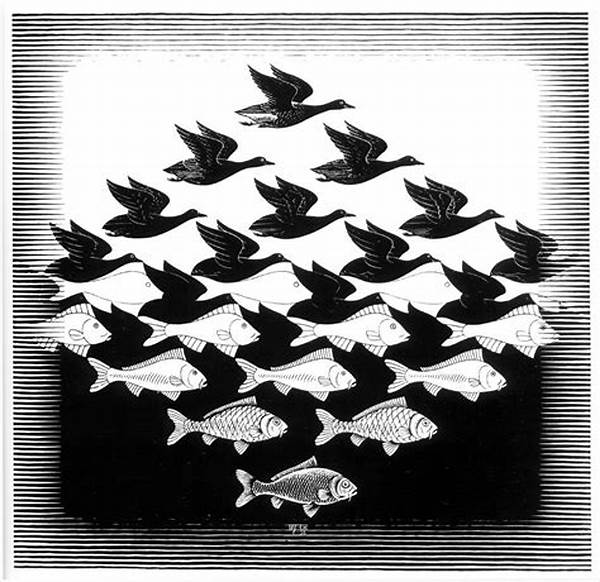Hey there, fellow photography enthusiasts! Ever found yourself looking at a photo that just hits you right in the feels? That, my friends, is the magic of capturing emotions through framing. Photographers have this incredible superpower where they can freeze a moment and bottle its essence into a single frame. So, what’s the secret sauce to making your photos more than just a click? Let’s dive into some tips, tricks, and awesome examples of how to connect more deeply with your images!
Read Now : Simple Free Watermark Solutions
The Art of Emotion in Photography
When we talk about capturing emotions through framing, think of it as telling a story without words. It’s about freezing not just action, but emotion. Imagine a photograph of an old couple holding hands as they laugh together, the sun setting in the background. That’s more than an image; it’s a capsule of their happiness and connection. It’s not just about snapping away; it’s about carefully considering your composition. Where your subject stands, how the light hits their face, and even what’s out of focus plays a crucial role. The frame becomes a narrative that invites viewers into the world behind the lens.
But how do you capture that intangible essence? It starts with empathy. Step into your subject’s shoes. Feel what they feel. A portrait of a child’s screaming joy on a swing or a candid snapshot of a busy street pausing in a dancer’s twirl—all these images speak to us. They’re not just lines and colors; they convey a message, a feeling, a memory. Practice mindfulness and patience, and don’t be afraid to play with angles or wait for the authentic moment to reveal itself. Each frame holds potential—your task is to unlock its emotional core.
Techniques for Emotional Framing
1. Focus on the Eyes: They don’t lie. Capturing emotions through framing often hinges on the eyes, the window to our souls.
2. Use of Light: Natural or artificial light can dramatically change the emotion of a scene. Experiment with shadows for mood.
3. Color Psychology: Warm tones feel cozy; cool tones can feel distant or melancholic. Play around with hues for emotional impact.
4. Depth and Distance: How close or far you are from your subject can alter the intimacy of the shot.
5. Unpredictable Angles: Don’t be shy. Getting down low or up high can create unexpected and intriguing emotions.
Emotion-Filled Visual Storytelling
Have you ever noticed how certain photos manage to tug at your heartstrings? That’s the magic of capturing emotions through framing. It’s like giving life to a still image. When you master this, your photos can evoke laughter, nostalgia, hope, or even sorrow. Imagine standing with your camera, witnessing a fleeting second that epitomizes joy—like a surprise embrace between friends who haven’t seen each other in years. Capturing that moment through clever framing ensures the emotions transcend the temporary and become timeless.
The secret is to be present, observe, and anticipate. Inclusive framing matters too. By deliberately choosing what to include and exclude in your frame, you develop a narrative. The hustle and bustle of city life, the serenity of a quiet park, or the raw emotion on someone’s face—your unique perspective sets the mood and evokes feelings in your viewers. Remember, it’s not just about what’s in front of you, but how you choose to showcase it.
Capturing Emotions through Framing: Essential Tips
1. Start with Emotion: Be clear about the emotion you want to capture from the start.
2. Continuous Shots: Use burst mode to capture genuine emotion in motion.
3. Stay Invisible: Be a fly on the wall and let your subjects forget they’re being photographed.
4. Backgrounds Matter: Choose a backdrop that complements or contrasts the emotion for added depth.
5. Interact with Subjects: Much like a director, guide them to express, but keep it natural.
Read Now : Reducing Content Ambiguity Effectively
6. Natural Poses over Staging: Encourage spontaneity for authentic emotion.
7. Edit with Care: Post-processing should enhance, not overshadow the emotion.
8. Scout Locations: The setting can amplify the emotion; choose wisely.
9. Experiment with Formats: Square, landscape, portrait—different crops tell a different story.
10. Trust Your Instincts: Sometimes the best shot is the one that simply feels right.
Nuances in Framing Techniques
When you’re out there capturing emotions through framing, remember that it’s not only about the subject but everything that coexists within your shot. It’s the nuanced play of shadows that add drama or the faint smile captured when a person feels they’re not being observed. The moment a musician loses themselves in a melody, or a child’s gaze of wonder at the first sight of fireworks, all these subtle feelings matter.
Framing isn’t just composing a picture—it’s about capturing the ambiance that surrounds your subject. The juxtaposition of a colorful building against a grey sky or a solitary figure in a bustling crowd can speak volumes. Each of these components adds richness and depth to the story your photo tells. Stay attentive to these subtleties, and practice turning them into integral parts of your emotional narrative.
Slang Style Summary: So What’s the Deal?
Alright, let’s break it down. Capturing emotions through framing is straight-up cool. It’s not just about pointing your camera and click-bam, you have a pic. Nah, it’s way deeper than that. You gotta vibe with the scene, feel the mood, and then let your frame do the talking. Imagine snagging that perfect shot of your dog’s guilty face after it tore apart your couch—every pet owner gets it, right? It’s relatable, it’s real, it’s raw.
When you’re in the framing game, you’re not just snapping pics—you’re saving moods and feels. The shadows, the light, the little details that make it all pop—you’re basically bottling the essence of that moment. And trust me, when someone checks out your shot and gets hit with all those feels, you know you’ve nailed it. Keep that camera battery full and get out there. You never know which moment’s about to become legendary on your social feed!
Recap on Capturing Emotions
In the end, capturing emotions through framing is like crafting visual poetry. Each photograph is a stanza, packed with potential to evoke and communicate experiences beyond mere visuals. As you hone this skill, remember that every element in your frame, from lighting to composition, contributes a line to this poetic narrative. By engaging with your subjects and your surroundings, your images can transcend static confines and resonate on an emotional frequency.
Whether you’re capturing the vibrancy of a bustling street market or the introspection of a lone wanderer against a sunset, let emotional framing guide you. It’s not just a technique; it’s an artistic approach that leaves a lasting impression, telling stories and evoking emotions long after the last shutter click is heard. Remember, every frame is an opportunity to connect, inspire, and share your unique perspective of the world with others. So, go ahead—capture the emotions waiting to be framed out there!



